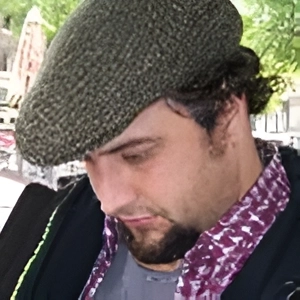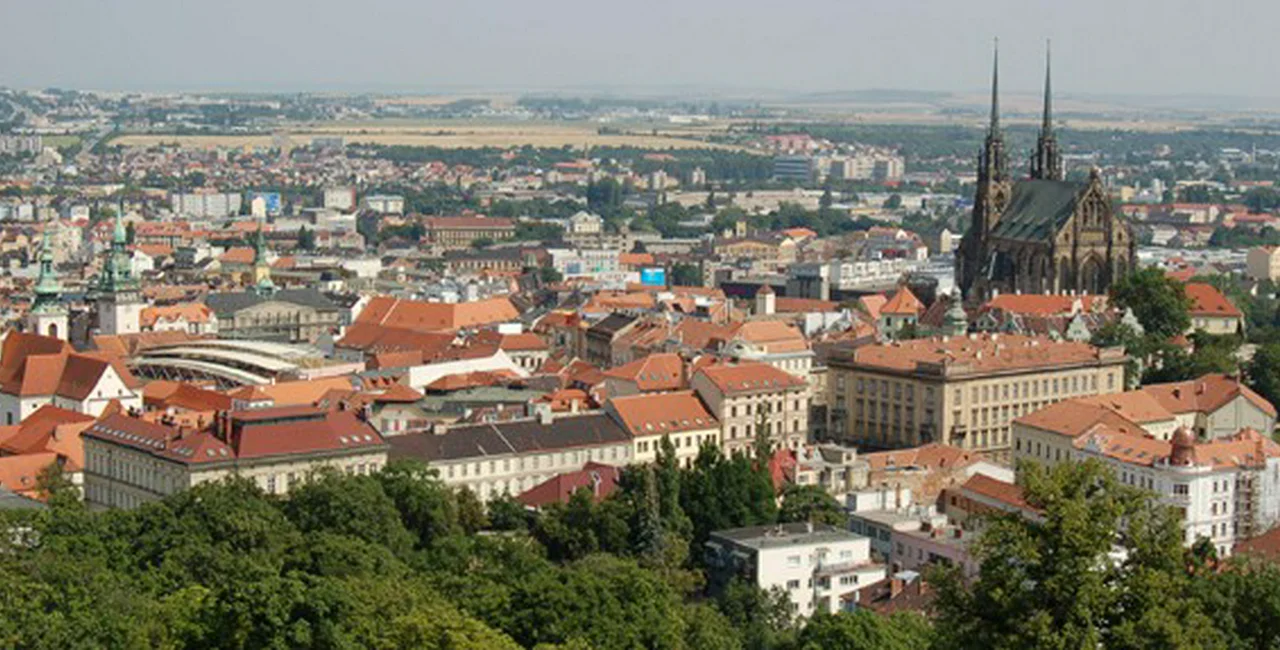The Czech Republic’s second largest city isn’t just a smaller version of Prague. The city has its own distinct atmosphere and attractions, if you’re willing to spend the time exploring them. From Špilberk Castle to the modern Villa Tugendhat to the city´s many restaurants and bars, you will find something to stimulate and perhaps even entertain you.
PARTNER ARTICLE
Getting there:
Bus and train connections are quite regular. Student Agency‘s fairly modern buses run almost every hour and the cost is a bit cheaper than rail. However, for comfort you can’t beat the train, especially if you get one of the EC trains. Of course, if you want to get there super quick, you can take the Pendolino (SC) trains, which are much more expensive. If you intend to visit the city just for the day and manage to complete your journey by midnight get a one day ČD NET ticket. It’s cheaper than a return. The ČD NET is not valid on the Pendolino.
Town Center:
The bus will drop you off outside the Grand Hotel on Benešova třída. Take the stairs beside the hotel, turn left on to Josefská then right on to Masarykova. Masarykova takes you to náměstí Svobody (Freedom Square), which is the town’s center. Masarykova leads all the way to the train station. Cross nádražni street. You should see Masarykova in front of you.
What to see:
Don’t be deceived by Brno’s smaller size. There is quite a lot to see, so you might want to plan your time to make sure you can fit as much as possible in. A few places I would recommend as must sees would be Špilberk Castle, Tugendhat Villa and the Capuchin tombs.
Špilberk Castle:
Prague Castle might have the grandeur, but you can smell the history at Špilberk. As soon as you enter the musty entry tunnel, you get an idea of the age of the place.
The castle was built in 13th century but has gone through many changes over time, starting as a royal castle until it was finally used as a prison by the Nazis during the Second World War. The history of the castle, as well as the city, is part of the City of Brno Museum. Those displays dealing with the castle’s penal past are both grim and affecting. Criminals and political prisoners were held and tortured here under the Hapsburgs until Joseph II abolished torture in 1776. Some of the implements used are on display.
From the French Revolution onwards the castle increasingly became a prison for those who wished to see the principals of liberty and national sovereignty spread to the Austrian-Hungarian Empire. French, Italian, Hungarian and Polish agitators were all interned here. When the Nazis took control of the region Špilberk’s role continued. The displays use contemporary documents to create a feel for the time. Information sheets in English give you brief and readable accounts.
Perhaps the most moving of the displays are the letters sent to the prisoners and the pens the inmates fashioned from fish bone to write forbidden letters with ink made from whatever material came to hand, including soot, brick dust and rhubarb root. It might be worth seeing this display last as it certainly casts an eerie pall over the whole building. Unfortunately, I didn’t know this beforehand.
The remainder of the exhibition is relatively sedate. It covers the city´s religious, industrial and military history. Military enthusiasts will be impressed by the collection of flint-lock guns, halberds and a sword so big it couldn’t possibly be lifted even in two hands. Admittedly, additional historical information would improve an understanding of the items.
Špilberk also serves as an art gallery. There is a fairly ho-hum collection of Renaissance paintings: all heavy religious pieces and dour portraits. The collection of Czech modernism is slightly more interesting with Šima, Filla and loads of Antonín Procházka. There are also rooms dedicated to examples of 1920s and 30s architecture and design, including a map of where to find the works in Brno. Among the architects featured is Ludwig Mies van der Rohe, whose Villa Tugendhat is discussed below.
At the moment, the castle is also host to an exhibit of Czech Baroque with a range of pieces from the religious to the everyday. Among the most noteworthy are the huge threadbare battle standards from the 18th century, an early German picture dictionary and a tiny finely carved crucifix 8mm by 5mm.
After all this culture you might want to clear your head, so go straight to the lookout tower. Or you might decide to skip the history lesson and simply take in the view. From here you can see the whole city and the gentle surrounding hills. But it’s not what’s above the castle but rather below that is the most interesting.
The casements are a series of former storage areas and prisons beneath the castle. Before you are allowed to roam the rooms, you are treated to a brief explanation (in Czech or English) of the various functions and history of these subterranean rooms. The grimmest detail is that many of the prisoners didn’t survive more than two months of confinement here. Špilberk certainly deserved its reputation as the harshest prison in the empire. Watch out for the puddle at the ticket office. This isn’t a burst pipe but groundwater seeping through the bricks.
Entry fees for the different parts of the castle and their opening times are available at their website: www.spilberk.cz.
Capuchin Tombs:
If you didn’t get your fill of dank in the Špilberk casements, the Capuchin Tombs are not far away on Kapucínské náměstí, which is just off Zelný trh (Cabbage market). You might want to stop at the market for something fresh since the sights in the catacombs are far from it.
In its depths you will find the fairly well-preserved remains of medieval monks as well as figures of note, including Baron Trenck who was also an inmate at Špilberk. He was imprisoned for insulting an imperial general.
Opening times:
15th February to April: Tues – Sat: 9:00-12:00 and 14:00-16:30; Sun: 11:00-11:45 and 14:00-16:30.
May to September: Mon – Sat: 9:00-12:00 and 14:00-16:30; Sun: 11:00-11:45 and 14:00-16:30.
October to 14th December: Tues – Sat: 9:00-12:00 and 14:00-16:30; Sun: 11:00-11:45 and 14:00-16:30.
14th December to 14th February: CLOSED
Entry Fees:
Adults: 60 CZK
Children: 30 CZK
Villa Tugendhat:
For those whose tastes stretch to the more modern, a trip to this villa is well recommended. It’s even worth it to get a feel for the lives of people, at least one middle class family, and how they lived during the first republic.
Admittedly, the UNESCO listed building may seem quite plain when you first arrive, but the wonder of the space becomes apparent as soon as you descend the stairs into the main area. Rohe used an iron frame so as to dispense with the need for walls and to create greater space within the building. Rohe favored the use of materials rather than art to decorate the place. The most notable example of this approach is the onyx wall in the living room, from which the Tugenhadt family enjoyed a sumptuous view of Brno, before they were forced to abandon their dream home because of Nazi persecution.
Entry fees, tour information and opening times are available at their website: www.tugendhat-villa.cz.
Brno Brews
Though you are in the capital of Moravia, an area famed for its wines, Brno holds a few delights in store for those who prefer an amber colored tipple. U Richarda is a modern pub on Údolní street at the foot of the castle hill. It brews a 12° lager, an 11° sour cherry beer, 11° wheat beer and 16° honey beer. On this occasion, I tried the honey which is not all that sweet. Rather it has a crisp bitter taste and clean finish.
There is the Dalšický brewery at the restaurant, Zelená Kočka, which is closer to the city center and definitely more traditional. A sign of this is the ceramic beer mats, which they still use. They brew an 11° lager and 13° dark lager. The light lager is a typical pilsner with a slightly grainy pallet and a clean finish.
The most noteworthy beer from this trip was the wheat beer at Pegas Brewery. The beer has a distinct spicy nose with hints of nutmeg and a clove finish. The beer is served with lemon. As unique a taste as it was, I don’t think I could manage more than one. Pegas also brew lager, dark lager and 16° semi-dark lager.
Brno is also home to a more well-known beer, Starobrno. The brewery is located just outside the town centre behind the castle. Starobrno brew 10°, 11° and 12° lagers, a 10° semi-dark lager called řezák and a 10° dark lager. They also brew some special beers, such as the 14° lager “Baron Trenck,” a 15° semi-dark almost red lager, and the 13° dark lager “Black Drak.” It is possible to organize tours of the brewery, which includes tasting their wares. Go to their website for further information (in Czech): www.starobrno.cz.
Around Brno:
Slavkov u Brna, which is just outside Brno, is the site of the famous “Battle of Three Emperors.” On this occasion Napoleon’s forces defeated the combined forces of Austria and Russia. The historical recreation of the battle to celebrate its 200th anniversary drew participants and spectators from around Europe. This year´s battle is scheduled for 27th to 29th November. More information can be found at their website (in English).
For nature lovers, the Moravian Karst region is a must see. The landscape here has formed through the interaction of water with limestone to produce caves with an array of stalagmites and stalactites. The caves are located near Blansko, which is about 30 minutes by train from Brno. The website recommends booking if you intend to go in the summer. More information can be found here: www.moravskykras.net.
Places to stay:
Grandhotel Brno sits just on the edge of the historical center. It offers 105 rooms and suites, though it isn’t for the budget traveler.
Address: Benešova 18, Brno
Hotel Arte, a centrally located, turn of the century hotel, is a little more affordable but it isn’t exactly cheap.
Address: Drobného 6, Brno
Penzion na Starém Brně offers board in a historical setting at moderate prices.
Address: Mendlovo náměstí 157, Brno – Staré Brno
Fino Club offers moderately priced accommodation with a variety of sports facilities as well.
Address: U hřiště 737, Brno
Hostel Fléda is a little more reasonably priced with dorm rooms sleeping 4, 5 or 12 people.
Address: Štefánikova 24, Brno
Places to eat:
Restaurant Sherlock Holmes provides inexpensive food in the center of Brno. I’m not sure of the connection with the famous detective, but if you’re looking at price over authenticity this might suit you.
Pivnice Pegas, apart from serving its own beer, also serves a range of traditional Czech meals along with more standard pub food.
Vinárna u Zlatého Meče is slightly more upmarket Czech pub. The cellar atmosphere goes well with a carafe of Moravian wine.
If you are on a really tight budget then you will find plenty of fast food outlets around the town selling sausages, gyros and Chinese food.












 Reading time: 9 minutes
Reading time: 9 minutes 


















